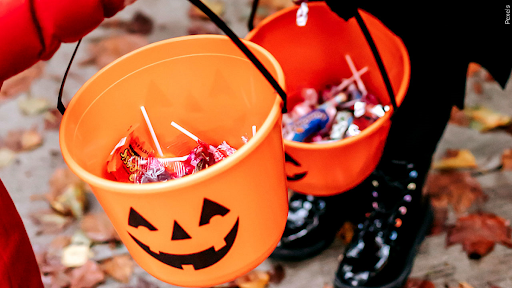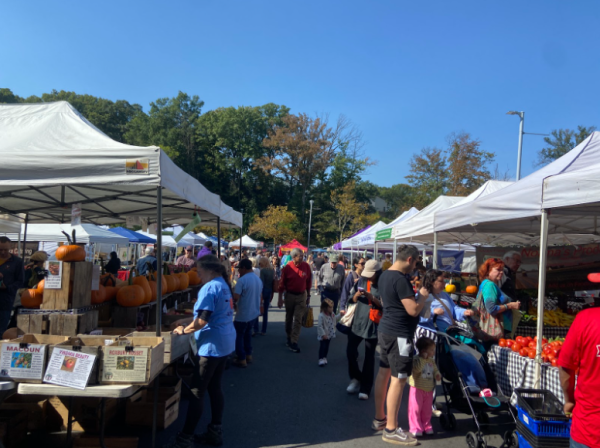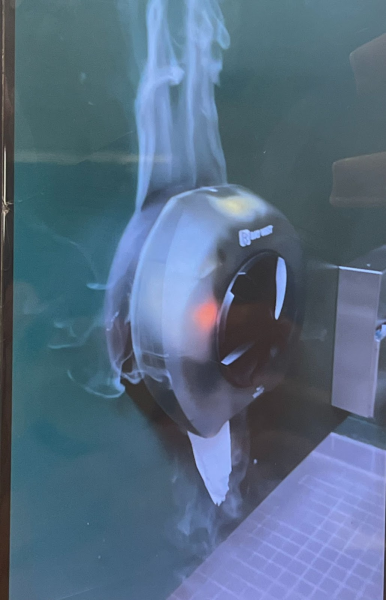The Environmental Horrors of Halloween

Image via Pexel
With Halloween on the horizon, people are kicking off celebrations full of pumpkins, costumes, and candy. Behind the spooktacular food and fun, many don’t realize that this beloved holiday has a dark side: its untold plastic waste and devastating impacts on the environment.
After canceled celebrations from the Covid-19 lockdowns, Americans are projected to go all out this Halloween and spend a record-breaking 10.6 billion dollars. Unfortunately, most consumers aren’t aware that the holiday creates massive amounts of waste. In previous generations, decorations were frugal, homemade goodies were free of plastic wrappers, and simple costumes were crafted with paper and fabric scraps. But with our current abundance of shopping resources and commercialization, Halloween has grown to generate millions of tons of garbage. In fact, according to an ABC article, a single trick or treater creates a full pound of trash.
A major cause of this waste comes from one of Halloween’s most beloved customs: wearing costumes. More than 80% of Halloween costumes are made of cheap plastics, and the 7 million trashed costumes each year creates waste equivalent to 83 million plastic bottles. Since most of these garments are made with non-biodegradable materials, they survive in landfills for decades despite being worn only once or twice.
While plastic apparel seems like the obvious culprit for Halloween’s impact on the planet, pumpkins play a surprising role in environmental destruction. 60% of Americans don’t eat the pumpkins they buy, which means the gourds become short-lived decorations that end up as trashed jack-o’lanterns. With 1 billion pounds of pumpkins sitting in landfills, the rotting fruit releases methane into the atmosphere, accelerating the warmth of our planet.
The sour truth about Halloween confectioneries is that the 600 million pounds of candy bought by Americans annually create a remarkable amount of plastic waste. Candy wrappers are made with a mix of plastic and aluminum foil, which is an economical and logistical horror to separate. Since the separating process takes an immense amount of energy, it’s better to simply throw out the wrappers, which end up littering forests and waterways.
Even though our traditional ways of celebrating Halloween damage the environment, we don’t have to halt the holidays to be sustainable. Making your costume out of recycled or biodegradable materials keeps plastic out of landfills while doubling as a festive activity. Repurposing old clothes, buying garments from thrift stores, and making creations out of household trash are great ways to curate the perfect Halloween attire. As for pumpkins, look for farms and local organizations that will compost your jack-o’lanterns instead of throwing them in the trash. Simply eating your pumpkins can reduce your carbon footprint, and this extremely versatile gourd can be made into loaves of bread, salads, and roasted pumpkin seeds. Finally, while it feels impossible to buy candy without wrapper waste, try getting sweets that come in recyclable paper boxes like Nerds or Dots. Buying candies from small businesses or brands that specialize in making eco-friendly packaging is also a great option, or you could settle for homemade snacks instead.
Waste is hard to avoid during the holiday season, but with the impending threat of climate change, modifying our everyday habits for the sake of eco-consciousness is more important than ever. Navigating the steps to a low-waste Halloween can seem intimidating, but making these simple changes to our traditions can help save the spooky season without taking a Texas chainsaw to our planet.

Rhiannon Stevens is a Senior and the Sentinel's Social Media Editor. They love creating art, sewing clothes, and listening to true crime podcasts. She’s...















Hukaito • Feb 1, 2023 at 10:46 pm
This is alarming. Thank you for bringing awareness to the mass.